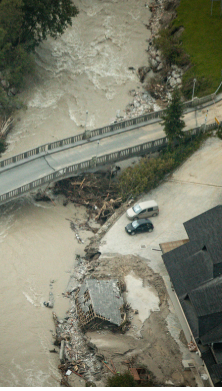Question (Q): The COVID-19 pandemic has had a huge impact on the commercial and specialty insurance industry. What has been the impact on AGCS?
Thomas Sepp (TS): The pandemic is certainly one of the worst loss events for the insurance industry in history – claims could be as high as $110bn in 2020, according to Lloyd’s estimates. AGCS alone has reserved about €488mn (US$571mn) for expected COVID-19 related claims, especially for the cancellation of live events and the disruption of movie or film productions in the entertainment industry.
However, it’s not only the magnitude of COVID- 19 losses, which is unprecedented, we also see changes in loss patterns and causes and expect this to continue. The pandemic has reduced risk in some areas while, at the same time, changing and heightening it in others. Together with climate change and global warming, the pandemic may be the prologue to more far-reaching and disruptive risk changes in years to come.
Q: What changes in claims trends did you observe during the global lockdown in the first half of 2020?
TS: With the sharp fall in economic activity and prolonged social distancing measures, we have witnessed material reductions in some lines of property and liability insurance, most notably in the aviation sector but also more generally with fewer accidents and injuries at work, on the roads and in public spaces.
The pandemic caused business closures and disruptions globally – which may be partly insured. It also impacted standard business interruption claims which were caused by property damage in different ways: On one hand, the cost of non-COVID-19 related business interruption, caused by events such as fire or extreme weather, fell in many cases, as many manufacturers, as well as their customers and suppliers, either shut down or scaled back their production. On the other hand, COVID-19 containment measures have led to longer disruptions and more costly claims in some cases. For example, a fire at a chemical plant in South Korea forced the closure of the facility. Restricted access due to the coronavirus lockdown prolonged the reinstatement period, increasing the overall cost of the standstill.

Q: How is claims settlement progressing – in light of the challenges posed by lockdowns and remote working?
TS: We received thousands of COVID-19 claims notifications and each one had to be evaluated on an individual basis to determine if there was insurance coverage due to the terms agreed in the policy. If coverage was clear, we have settled as quickly as possible. If not – and this was the case for many notifications under business interruption policies in the US – we have had to work with brokers and clients to explain and clarify the terms of insurance. Obviously, at the same time, we also had to deal with claims which did not directly result from the pandemic, for example from the riots in the US or large fire and shipping incidents.
This has all contributed to a high workload for our claims experts, many of whom still continue to work remotely. Technology has played a crucial role in delivering an uninterrupted claims service throughout the pandemic. Remote claims inspections and assessments are now possible through satellite, drone or image capture technology and tools such as MirrorMe. Meanwhile, our digital cloudbased claims platform has passed the test of the coronavirus. The trend towards using technology in claims will certainly accelerate.
Q: How are loss trends evolving after containment and social distancing measures have been eased in many countries?
TS: What we have observed in many countries is that claims frequency is likely to pick up with activity. The resumption of business brings its own risks as plants and machinery are reactivated and with an expected rise of insolvencies and unemployment – for example, product liability and recall claims tend to follow economic activity.
Opening factories and restarting production lines are stress situations and can heighten the risk of machinery breakdown and fire. However, most of our clients, often supported by insurance risk managers, have continued their maintenance routines through lockdown periods and have restarted with precaution and due care. Therefore, we have been largely spared from such claims to date.
The hibernation of some industries, such as the global aviation sector, does not mean that all loss exposures have equally disappeared, they just have changed, creating new risk accumulations. For example, large parts of the worldwide fleet are grounded in airports, many of which might be exposed to hurricanes, tornados or hailstorms. The risk of shunting or ground incidents when large aircraft fleets are parked temporarily also increases and can result in costly claims. COVID-19 driven liability claims have been benign to date, but there is also the potential of claims yet to materialize from long-tail lines, such as claims against directors and officers (D&O) or professional liability, as well as workers’ compensation, if any negligence or failures to adequately protect against the coronavirus outbreak have been perceived. The pandemic could also trigger litigation against companies and their D&Os., particularly when insolvencies are involved, such as where boards have failed in their duty to prepare for a pandemic or for a longer disruption with prolonged periods of reduced income.

Q: And what do you expect in respect of the long-term impact of COVID-19 on the risk landscape ?
TS: This is difficult to predict, of course. COVID-19 has highlighted or accelerated many wider changes in business and society. McKinsey recently said that data showed the COVID-19 pandemic vaulted global business five years ahead in terms of digitalization in just an eightweek period.
A growing reliance on technology, the shift to homeworking for staff and the remote monitoring of industrial facilities could make companies more vulnerable to cyber-attacks, for example. Also, trends such as a reduction in air travel or investments in green energy and infrastructure would change the risk environment for companies and shape claims trends for insurers. There are many potential scenarios and only time will tell how trends will ultimately play out. For example, the dramatic increase in hygiene standards will positively impact quality issues in many industries, while any changes in production line processes because of social distancing could bring a higher margin of error.
Definitely, a topic to watch is the current rethinking and de-risking of global supply chains to achieve more operational resilience. Many companies are currently reviewing their supply chain strategies and are evaluating options such as parallel supply chains with more redundancies or some reshoring from low-cost countries back to more developed markets. This will have an important impact for insurers, both in terms of generating demand for new protection solutions, as well as new claims scenarios.
















